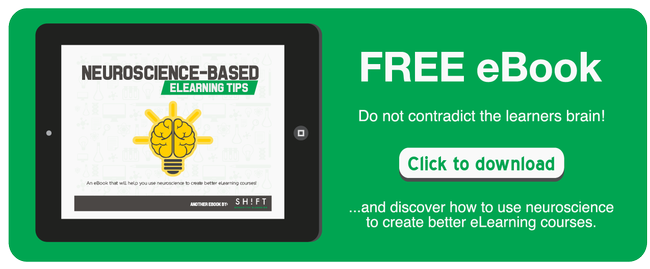Paying attention is a task people take for granted; they rarely stop to think about the complex neurocognitive processes involved. However, it is an important topic for eLearning developers who are often so concerned about the superficial elements of their courses and neglect to learn how the brain works. After all, paying attention is the first step in the learning process, so ensuring learners pay attention is fundamental.
In order to efficiently process the huge amounts of information absorbed every second, the brain must impose several control measures. This starts with the prioritization of different types of stimuli, a process that controls what information to ignore and what to recognize and how much concentration to give to particular elements.
The brain also connects new information to prior knowledge to aid the understanding of a new piece as well as to develop a clearer idea about broader concepts. Finally, it helps a person to focus attention on important aspects for an appropriate amount of time. This latter can be a difficult task when a subject is not inherently interesting.
Helping students to pay attention is a primary concern of training; however, is extremely challenging for eLearning professionals to be successful when they lack a basic understanding of how the attention system works.

The Basics: What Is “Attention” and What Brain Regions Fuel Attention?
Although the human brain is highly adept at processing information, it has a limited capacity meaning it is unable to attend to everything received from stimuli and memories at once. “Attention” refers to the capability of the brain to choose one aspect on which to concentrate while ignoring everything else in the environment. It lies in two areas of the brain:
- The prefrontal cortex, located behind the forehead and spanning to the left and right sides of the brain, handles willful concentration. Part of the motivational system, it helps a person focus attention on a goal.
- The parietal cortex, behind the ear, is for sudden events that require action.
What Other Regions of the Brain Play a Role in Attention?
Attention is largely a function of the Reticular Activating System (RAS), which includes a number of nerve fibers such as the thalamus, hypothalamus, brain stem, and cerebral cortex. The RAS accounts for shifts in levels of involvement in surroundings; for instance, when it is operating fully, the person is awake, alert, and attentive, but when it is less active, the person feels tired and inattentive.
The RAS is responsible for sorting sensory stimuli at the spinal cord and sending the only most relevant information to appropriate destinations in the conscious brain. Information that gets this far is carried to the amygdala, the emotional filter, which determines what passes to the prefrontal cortex, the place where the highest cognition and emotional reflection takes place.
The Connection Between Attention and Memory for Learning
The brain’s goal is to choose the stimulus that is the most immediately relevant and valuable, so it is easiest to pay attention when information is interesting. For effective learning to take place, students must focus their attention on the learning activity. However, voluntarily keeping attention is a challenging task — typically the mind wanders between 20 to 40 percent of the time when reading.
Therefore, it all comes down to the following: the less engaging the course, the more difficult it is for students to hold their attention. In order to create interesting courses, eLearning developers must include meaningful learning situations and opportunities throughout the course to maintain attention and retain information in the long-term working memory.
Check out these tips to draw attention to your eLearning courses:
- Five basic rules that will help you keep learner's attention where it belongs: on your information.
- Tricks for Capturing Your Students’ Attention
- 4 Psychological Triggers That Can Help You Grab People's Attention in eLearning
Implications for eLearning Professionals
eLearning developers need to examine their courses to determine whether they are retaining the attention of their students. A course is useless if it does not interact with a high proportion of brain cells.
Research suggests that some forms of information are better at grabbing learner’s attention than others: particularly personalized, concise, emotionally evocative information from a trustworthy source. It is important for eLearning developers to remember that they are competing for their learners’ attention and to bear the following in mind:
- People do not pay attention when information is boring or presented in an uninteresting way. (John Medina. Brain Rules)
- Attention begins to wander after 10 minutes if the brain is not engaged (John Medina. Winning the Attention Battle 10 Minutes at a Time)
- People are unable to multitask — it is only possible to focus on one thing at a time.
- The brain pays attention to people better than things.
- Most people have similar rhythmic patterns: around 6 AM, they experience a sharp rise in the availability of attentional molecules, causing them to wake up. The average level of molecules remains relatively high during the morning but begins to decline during the afternoon, reaching the lowest levels after midnight (Robert Sylwester and Joo-Yun Chon. What Brain Research Says About Paying Attention).
References:
- How the Brain Pays Attention. ROBERT DESIMONE MCGOVERN INSTITUTE FOR BRAIN RESEARCH, MIT
- May I Have Your Attention Please? by Michael I. Posner, Ph.D. University of Oregon, Eugene, OR, USA
- What is Attention?
- Why paying attention is anything but elementary








